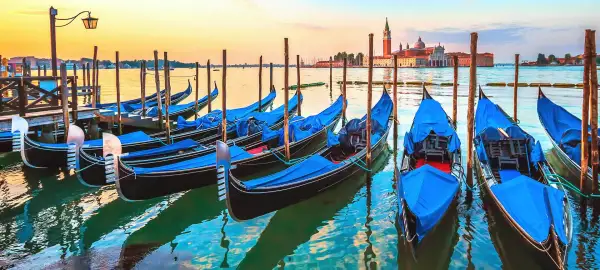Small Group Experiential Travel
Tour Code
IT2 When To Go
Apr, Sep Start
Palermo (PMO) End
Venice (VCE) Countries Visited (1)
Italy Overnight In (14)
Rome, Palermo,...More > Activity Level
2 - Moderate? Tour Type
Cultural? - Overview
- Info & Inclusions
- Itinerary
- Map & Hotels
- Photos
- Dates & Prices
Highlights
- Max Group Size 18
- Guided tours of all major towns and cities visited
- Ancient Greek Temples at Agrigento and Paestum
- Rome - The Vatican & the Sistine Chapel
- The Accademia & Michelangelo's David
- Water taxi ride on Venice canals
- Singles friendly (view options for single travellers)
Description
What do you get if you mix the incredible cultural riches of Italy's north with the laid back beauty of Southern Italy? You get one of the best guided tours of Italy encompassing the elegant beauty of the Roman Empire's most iconic buildings, a curated look into one of the world's largest collections at the Vatican, postcard perfect settings on the Amalfi Coast and Cinque Terre, a cruise along the canals of Venice, and so much more. Our guided tours of Italy are the chance to understand first hand why this destination captures the heart of all those who enter its borders.
In Southern Italy, it is easy to get lost in the island lifestyle of Sicily. Markets are filled with fresh fish and the countryside is lined with orange and lemon trees. Fresh ingredients make mealtime a treat, while the days are complete with wanderings across ancient Greek temples and medieval cities, with a backdrop of active volcanoes and a rugged landscape.
Our guided tours of Italy vary from walking tours in old city squares to discovering the buried city of Pompeii, a city frozen in time beneath volcanic ash and pumice stone that covered the city nearly 2,000 years ago.
Take a step back into the days of the Roman Empire with a guided tour of the colosseum, an arena which held nearly 55,000 spectators, before venturing into the Roman Forum and onto the Spanish Steps. Rome is a city so vibrant it practically hums, replete with squares designed by Michelangelo and fountains by Salvi. Rome contains the walled state of the Vatican, itself home to the amazing collections at the Vatican Museums.
For art enthusiasts, our guided tours of Italy take us to the heart and birthplace of Renaissance, where we stand in awe of the world's most famous sculpture: Michelangelo's David. Nearby, we complete an art pilgrimage with a visit to the Uffizi Gallery, home to Botticelli, Leonardo da Vinci, Raphael, Michelangelo, Titian and Caravaggio, as well as one of the most famous paintings in the world: Botticelli's 'Birth of Venus.'
It is easy to understand how Italy inspired the great minds and artistic legends of history particularly as we tour the Tuscan countryside. We are surrounded by endless grape vines clinging to rolling hills, stretching towards timeless cities such as Siena, or medieval fortresses such as that found at San Gimignano.
More inspirational sights are revealed on a cruise along the windy road cut into the rock on the Amalfi Coast, or strolling from village to village in the brightly coloured Cinque Terre. Indeed, much of Italy feels like a step back in time.
Life moves at a slower pace in the fertile plains, where wine and balsamic vinegar are created. Step back in time to see the Byzantine monuments erected after the 5th century in Ravenna. Some might conclude that the rose coloured buildings of Verona make it among Italy's finest towns, while others may conclude that it is Venice's canals or Agrigento's Greek Temples or Palermo's markets that stole their heart.
Wherever you go on our guided tours of Italy, it is a sure bet that it will be one that is both memorable and inspiring.
In Southern Italy, it is easy to get lost in the island lifestyle of Sicily. Markets are filled with fresh fish and the countryside is lined with orange and lemon trees. Fresh ingredients make mealtime a treat, while the days are complete with wanderings across ancient Greek temples and medieval cities, with a backdrop of active volcanoes and a rugged landscape.
Our guided tours of Italy vary from walking tours in old city squares to discovering the buried city of Pompeii, a city frozen in time beneath volcanic ash and pumice stone that covered the city nearly 2,000 years ago.
Take a step back into the days of the Roman Empire with a guided tour of the colosseum, an arena which held nearly 55,000 spectators, before venturing into the Roman Forum and onto the Spanish Steps. Rome is a city so vibrant it practically hums, replete with squares designed by Michelangelo and fountains by Salvi. Rome contains the walled state of the Vatican, itself home to the amazing collections at the Vatican Museums.
For art enthusiasts, our guided tours of Italy take us to the heart and birthplace of Renaissance, where we stand in awe of the world's most famous sculpture: Michelangelo's David. Nearby, we complete an art pilgrimage with a visit to the Uffizi Gallery, home to Botticelli, Leonardo da Vinci, Raphael, Michelangelo, Titian and Caravaggio, as well as one of the most famous paintings in the world: Botticelli's 'Birth of Venus.'
It is easy to understand how Italy inspired the great minds and artistic legends of history particularly as we tour the Tuscan countryside. We are surrounded by endless grape vines clinging to rolling hills, stretching towards timeless cities such as Siena, or medieval fortresses such as that found at San Gimignano.
More inspirational sights are revealed on a cruise along the windy road cut into the rock on the Amalfi Coast, or strolling from village to village in the brightly coloured Cinque Terre. Indeed, much of Italy feels like a step back in time.
Life moves at a slower pace in the fertile plains, where wine and balsamic vinegar are created. Step back in time to see the Byzantine monuments erected after the 5th century in Ravenna. Some might conclude that the rose coloured buildings of Verona make it among Italy's finest towns, while others may conclude that it is Venice's canals or Agrigento's Greek Temples or Palermo's markets that stole their heart.
Wherever you go on our guided tours of Italy, it is a sure bet that it will be one that is both memorable and inspiring.
Price Includes
- Full-time Tour Leader service plus local guides at some locales.
- Breakfast and dinner (mostly local restaurants) daily.
- All sightseeing and entrance fees for sites noted as 'visited' in the detailed itinerary.
- Gratuities for local guides, drivers, restaurant staff, porters.
- Airport transfers for land & air customers and for early arriving/late departing land & air customers who book their extra hotel nights through us.
Exclusions
- International airfare to/from the tour.
- Tour Leader gratuities, lunches, drinks, personal items (phone, laundry, etc), air taxes (if applicable), and excursions referenced as 'optional'.
- Airport transfers for Land Only customers.
- Our post-reservation trip notes offer further guidance on optional meal costs and shopping.
- Optional travel insurance. Click on the “Resources” tab for more information.
Trip Info
- Seasonality and Weather:
If you’re a fan of milder weather and less-crowded travel experiences, either spring or fall is the perfect times to plan your Italian adventure. Italy is fortunate to have a temperate climate most of the year, with the summer months (June, July, and August) being the hottest.
SOUTH - SPRING
The weather in Sicily in May is characterized by an abundance of sunshine and gentle breezes, offering an average of 10-11 hours of daylight for exploration. As the average temperature in Sicily in May is about 18C, this month encapsulates the allure of Sicily in spring.
FALL
In Campania and Sicily, fall weather remains comfortably warm, with daytime temperatures ranging from 20-25C (68-77°F) and cooler evenings at around 14-18C (57-64°F). The coastal regions, such as the Amalfi Coast and Naples, offer an enjoyable seaside experience with temperatures ranging from 18-23C (64-73°F) during the day and around 12-17C (54-63°F) in the evenings.
NORTH - SPRING
Italy's weather in May is exceptionally welcoming, with mild temperatures and conditions made for blooming flowers. Travel is very comfortable, as you'll avoid the blistering heat typical of summer. As summer approaches, temperatures in most parts of Italy start to rise. In central and northern Italy, including cities like Florence and Venice, May temperatures typically range from mild to warm, with average highs between 15C (59°F) and 23C (73°F).
FALL
With its vibrant fall colours and bountiful harvest, October is a fantastic time to explore Italy’s stunning landscapes, soak up its rich history, and indulge in mouthwatering cuisine. The summer heat gradually gives way to cooler autumn breezes, creating an ideal atmosphere for outdoor activities. The northern regions experience the early signs of autumn, with temperatures ranging from 12-18C (54-64°F) - Transport and Travel Conditions:
Transport throughout by private air-conditioned motor coach, 24-36 seats depending on ultimate group size (see 'group size'). Though we will have some full bus days, road travel is not particularly arduous as there are plenty of stops of interest and beautiful scenery along the way. Road are in good condition, though a little winding on some stretches. Short daytime ferry crossing.
This trip is typical of most of our European tours, which are ambitious and involve full days of travel and sightseeing. While we don't have any actual strenuous activity (ie hiking) built into the program, you will do a lot of walking on this trip. These walks will mostly be in the form of walking tours of towns and cities and short walks to dinner. Being Europe, and a hilly/mountainous area, cobbles, uneven surfaces, and slopes/stairs are common. If you are accustomed to typical "bus tours," which rely heavily on vehicular transport for all sightseeing activities, you should be aware that this tour is considerably more active.
Am I suitable for this tour? Please refer to our self-assessment form - Activity Level: 2
These are particularly busy tours that feature a lot of moving around, sometimes by train and short journeys on local transport. Walking tours of towns and cities are leisurely but you should be prepared to be on your feet for several hours. Some of our cultural trips that occur at high altitude and/or require greater independence with baggage handling (at hotels, airports, train stations) also fall into this category.
To learn more about the Activity levels, please visit our tour styles page. - Accommodation:
Well-located, air-conditioned, mid-range hotels (3-4 star) used throughout. All hotels have en suite bath, though some may have shower only. Porter service is sometimes available (see 'inclusions') though you should be independent with your luggage. Single rooms are limited and likely smaller than twins. - Staff and Support:
Tour Leader throughout, driver (s), local step-on guides in various locales. - Group Size:
Maximum 18 plus Tour Leader
View / Print Itinerary
- Day 1:Arrive in PalermoWelcome to Sicily, where ancient civilizations have layered their stories across sun-baked stones for nearly three millennia. As you transfer to our hotel in Palermo, you'll enter a city that has witnessed Phoenicians, Arabs, Normans, and countless others shape its character. The capital's streets tell tales through their architecture—a living museum where Byzantine domes nestle beside Norman towers, and Arab-influenced markets spill their colours beneath Spanish baroque facades. Tonight we gather with fellow travellers for our first evening meal, beginning a journey through Italy's most storied landscapes.
Overnight in Palermo.
Included Meal(s): Dinner, if required - Day 2:Palermo: City TourWe plunge into the sensory symphony of Il Capo market, where fishmongers display magnificent sword fish alongside glistening octopus, and Sicily's agricultural bounty creates a painter's palette of colours. Mount Etna's volcanic soil produces crisp apples, while Arab-introduced citrus trees offer their golden treasures. We sample fresh ricotta and pungent pecorino cheese, understanding how this island's fertility has sustained civilizations for centuries.
We then move to Piazza Praetoria, where the "fountain of shame" shocked 16th-century locals with its renaissance nudes—a testament to Sicily's complex relationship with outside influences. The baroque Quattro Canti divides the old city into four quarters, each corner representing a season and a Spanish monarch. At the Martorana Church, we witness the extraordinary fusion of Arab-Norman architecture, its interior ablaze with Byzantine mosaics that shimmer like captured starlight.
Our journey concludes at Monreale, the "Royal Mountain," where Norman King William II constructed a cathedral to demonstrate his kingdom's sophistication. We finish at the remarkable Church and Monastery of Santa Caterina d'Alessandria, where Dominican nuns once perfected the art of sweet-making in these very cloisters. The convent's rooftop terraces provide sweeping views across Palermo's piazzas, while the onsite bakery I Segreti del Chiostro continues centuries-old traditions.
As this is a large site, we end today's formal tour here so you can choose to linger and explore on your own before gathering for dinner this evening.
Overnight in Palermo.
Included Meal(s): Breakfast and Dinner - Day 3:Palermo - Segesta - Selinunte - AgrigentoWe journey across Sicily's ancient Greek heartland, where colonies once rivalled Athens in wealth and ambition. Sicily was part of Magna Graecia—when mainland Greece grew overcrowded in the 8th century BC, bold settlers sailed west seeking new fortunes. To them, Sicily represented what the Americas would mean to 16th-century Europeans: vast possibilities, untold riches, and considerable dangers.
Our first stop is Segesta, where a perfectly preserved Doric temple stands as testimony to Greek architectural mastery. This powerful city-state waged bitter wars with its rival Selinunte, our next destination. After a break for lunch, we explore Selinunte's magnificent ruins, once home to over 100,000 inhabitants and boasting an unrivalled temple-building program. Lost to history until a Dominican monk rediscovered its location in the 16th century, these temples rank among the ancient world's most impressive monuments.
We continue to Agrigento, where tomorrow we'll witness Sicily's most spectacular Greek legacy.
Overnight in Agrigento
Included Meal(s): Breakfast and Dinner - Day 4:Agrigento: Site Tour - Piazza Armerina - EnnaWe begin among Agrigento's magnificent temples, where five elevated structures create a picture-perfect tribute to ancient paganism's enduring power. Time, earthquakes, Punic Wars, and Christianity's rise have all tested these World Heritage landmarks, yet they remain defiant against Sicily's azure sky.
Next, we travel inland to explore Villa Romana del Casale near Piazza Armerina, a vast 4th-century complex that may have belonged to co-emperor Maximianus. This archaeological treasure houses some of the world's most beautiful Roman mosaics, including detailed hunting scenes, mythological images, and the delightful "bikini girls" performing ancient aerobics—proof that athletic fashion has ancient roots.
We then proceed to Enna, perched high in Sicily's interior. You'll have free time to explore this mountain town, perhaps visiting the Castello di Lombardia or Torre di Federico II for stunning panoramic views; your Tour Leader will point you in the right direction.
Overnight in Enna
Included Meal(s): Breakfast and Dinner - Day 5:Enna - Siracusa: Archaeological ParkWe travel toward Sicily's eastern coast, coming within sight of Mount Etna's imposing slopes. At 3313m (10,866 feet), Etna stands as one of Earth's most active volcanoes—both blessing and curse for local inhabitants. While volcanic soil creates extraordinary fertility, the constant threat of eruption looms; Catania was nearly buried by lava flows in 1669.
We arrive in Siracusa (Syracuse) and tour the Archaeological Park, including the Greek theatre where ancient dramas once echoed, the Monumental Altar of Hieron II, and the Latomia del Paradiso quarry with its famous "Ear of Dionysius." After a break for lunch, we explore Ortygia, old Siracusa's historic heart, wandering narrow streets where we discover the Temple of Apollo, Fountain of Aretusa, the main piazza, and the remarkable Duomo—a former Temple of Athena transformed into a Christian cathedral.
Overnight in Siracusa.
Included Meal(s): Breakfast and Dinner - Day 6:Siracusa - Mount Etna - TaorminaWe depart Siracusa and drive up the east coast toward Taormina, with stunning views of Mount Etna dominating our horizon. We'll make a detour and drive up Etna's slopes—have a sweater handy as we'll be approaching 1,800m (6,000 ft)! (Depending on weather, we may explore Mount Etna tomorrow instead.) This is Europe's highest volcano and one of the world's most active; its spectacular eruptions and fiery lava flows have fascinated scientists and visitors for millennia.
We continue to Taormina, arguably Sicily's most beautiful town—an ancient hilltop settlement full of history and culture, perfectly positioned between mountains and sea. Taormina's reputation for welcoming travellers spans centuries, combining incredible heritage in archaeology and architecture with genuine Sicilian hospitality.
Overnight in Taormina.
Included Meal(s): Breakfast and Dinner - Day 7:Taormina: City TouringWe begin with a leisurely walking tour starting at the almost perfectly-preserved Greco-Roman amphitheatre, Taormina's greatest treasure. This 3rd-century cliff-side arena once seated 5,000 spectators, with Mount Etna framed perfectly as a backdrop to the 1,800-year-old stage—a setting that continues to inspire artists and performers today.
We explore the Palazzo Corvaia with its fascinating blend of Arab, Norman, and Catalan elements, where Sicily's first parliament convened in 1410. The charming Corso Umberto I pedestrian street runs the town's length, lined with shops and boutiques leading to Piazza IX Aprile, where lovely views stretch across Naxos harbour to the Italian mainland. Above us rises the medieval fortress, while in Piazza del Duomo, Taormina's 15th-century basilica stands beside a fountain topped by the town's symbol: a female centaur statue.
The afternoon is yours for independent exploration of this enchanting town.
Overnight in Taormina
Included Meal(s): Breakfast and Dinner - Day 8:Taormina, Sicily - Paestum, Italian MainlandWe take a short ferry ride from Sicily to the Italian mainland and proceed by motor coach to Paestum, where three Doric Greek temples rank among the world's best preserved, rivalling those of Sicily and Athens. Originally built without mortar or cement—simply covered by terra-cotta tile roofs supported by wooden beams—these temples survived even the great earthquake of AD 69 that reduced Pompeii to rubble.
After periods of native Italian control in the 5th and 4th centuries BC, Paestum fell to Rome in 273 BC and was renamed. It remained a Roman town until deforestation of nearby hills turned the area into swampy marshland. Plagued by malaria and pirates, Paestum's ruins lay relatively untouched until rediscovered in the 18th century.
Overnight in Paestum
Included Meal(s): Breakfast and Dinner - Day 9:Paestum - National Archaeological Museum - PompeiiWe travel to Naples where we see the colourful harbour front and Castel dell'Ovo, a 12th-century fortress built on ancient villa ruins, before visiting the National Archaeological Museum. This impressive facility houses one of the world's most comprehensive collections of Greek and Roman antiquities. Built on Santa Teresa Hill as military barracks, later transformed into a university campus, it was remodelled in 1790 to receive the treasures of Pompeii and Herculaneum.
We then visit ancient Pompeii, dug out from volcanic ash and pumice stone deposited by Mount Vesuvius's eruption in AD 79. This entire area provides a fantastic record of how ordinary Romans lived their daily lives. We explore the House of Vetti, the most elegant of Pompeii's villas, and examine the intriguing House of Mysteries. The nearby House of Faun occupies an entire city block with four different dining parlours and two spacious gardens.
Overnight in Pompeii
Included Meal(s): Breakfast and Dinner - Day 10:Pompeii: Herculaneum & the Amalfi CoastThis morning we visit Herculaneum, a small town that was buried under Vesuvius's lava. Our tour here will include the baths, which were built during the reign of Agustus. An outstanding example of how the aristocracy lived is provided at the Casa dei Cervi.
We then drive along the famous Amalfi Coast on a winding road carved out of the rock in the mid-19th century. This scenic and unforgettable drive takes us to Amalfi, a resort town on the peninsula of the same name where we take a walking tour of the city. We will see the beautiful Duomo cathedral with its 13th century bell tower, the main square of the town, and the Cloister of Paradise.
After a break for lunch and some free time in Amalfi, we take the ferry to the port of Salerno where our bus will be waiting. This is a great way to truly experience the spectacular coastline with this relaxing journey (calm weather-permitting!).
On arrival in Salerno we'll rejoin our bus and return to our Pompeii hotel.
Overnight in Pompeii.
Included Meal(s): Breakfast and Dinner - Day 11:Pompeii - Monte Cassino - RomeToday's journey takes us to north to Rome via Monte Cassino. During the Roman Empire, the abbey located here was one of the great European centres of Christendom and one of the largest repositories of ancient learning. In 1944, Monte Cassino was destroyed by the Allied forces who suspected that it was occupied by German troops. The military cemetery on the nearby hill contains the graves of 1,100 Polish soldiers who lost their lives in the final assault.
Later we continue to Rome.
Overnight in Rome.
Included Meal(s): Breakfast and Dinner - Day 12:Rome: City TourWe begin at the Colosseum, where 55,000 spectators once roared as gladiators fought for survival in Rome's most brutal spectacles. Constructed nearly 2,000 years ago, this engineering marvel still dominates the cityscape. We then walk through the Roman Forum, heart of ancient civic life, where the Curia housed the Senate and the Arch of Titus commemorated military triumph. Among weathered columns and temple foundations, we witness the centre of an empire that shaped Western civilisation.
Ascending to Capitoline Hill, we reach the Campidoglio, Rome's original citadel and seat of government since the 12th century. Michelangelo redesigned this elegant square in the 16th century, creating harmonious symmetry from medieval chaos. We continue to Piazza Navona, where we break for lunch surrounded by baroque splendour. Here stands Bernini's magnificent Fountain of the Four Rivers, its figures representing the Nile, Ganges, Danube, and Plate—symbolising papal power across continents.
Next we visit the Trevi Fountain, its waters flowing from an aqueduct built in 19 BC. Legend promises that tossing a coin ensures your return to Rome. We then proceed to the Pantheon, Rome's best-preserved ancient building, where perfect proportions create an almost spiritual experience. Our day concludes at the Spanish Steps, where Romans and visitors alike gather as evening approaches.
NOTE: Due to traffic constraints and the proximity of today's sites, we'll travel primarily on foot and via Rome's efficient public transit system (tickets included). Any sightseeing not completed today will continue tomorrow afternoon.
Overnight in Rome
Included Meal(s): Breakfast and Dinner - Day 13:Rome: the Vatican Museums & St. Peter'sWe travel by metro across the Tiber River to Vatican City, the world's smallest sovereign state. Our guided tour begins in the vast Vatican Museums, where corridors seem to stretch infinitely, lined with humanity's greatest artistic achievements. Here we discover Greek and Roman sculptures that influenced Renaissance masters, Flemish tapestries depicting biblical narratives, and glittering mosaics assembled tile by precious tile. More than three million visitors journey here annually to witness this extraordinary collection.
The museums' crowning glory awaits in the Sistine Chapel, where Michelangelo's frescoes transform ceiling and walls into a theological masterpiece. Created between 1508 and 1512, these paintings revolutionised art history—their anatomical precision and emotional depth remain unsurpassed. We then enter St. Peter's Basilica, Christendom's largest church, its cavernous interior housing treasures including Michelangelo's tender Pietà, carved when he was just 24 years old. Outside, the elegantly symmetrical Piazza San Pietro embraces visitors in Bernini's colonnade arms.
After a break for lunch, we continue with any sightseeing carried over from yesterday.
NOTE: The timing and order of today's sightseeing may vary depending on seasonality. During lighter periods, we often begin in the morning; busier times may require an afternoon or evening visit to avoid crowds. We may include lunch instead of dinner today to optimise our schedule. Your Tour Leader will advise upon arrival.
Overnight in Rome.
Included Meal(s): Breakfast and Dinner - Day 14:Rome - Assisi - SienaWe depart Rome for Tuscany, stopping first in Assisi, birthplace of one of Christianity's most beloved figures. Despite attracting millions of pilgrims annually, St. Francis's hometown retains remarkable tranquillity. Born to wealth in 1182, Francis renounced his inheritance as a young man, embracing poverty and founding the Order of Friars Minor—later called Franciscans—whose message of simplicity resonated across medieval Europe.
The Basilica of St. Francis serves as Assisi's spiritual heart and Umbria's premier artistic treasure. After our guided tour of this two-tiered masterpiece adorned with Giotto frescoes, we continue through rolling countryside to Siena, arriving late afternoon. This medieval gem awaits our exploration tomorrow.
Overnight in Siena.
Included Meal(s): Breakfast and Dinner - Day 15:Siena & San GimignanoSiena reveals itself best on foot—indeed, its council pioneered Europe's first traffic ban in the city centre. Traditionally Florence's great rival, Siena chose a different path: whilst Florence embraced Renaissance innovation, Siena clung to medieval traditions. This preservation makes Siena the finest showcase of Italian Gothic architecture, its walled city sprawling across three hilltops, each connected by steep, winding streets that seem frozen in the 13th century.
Our guided walking tour explores Siena's atmospheric medieval quarters, beginning at the Palazzo Pubblico, Italy's finest example of Gothic civic architecture. Inside, Ambrogio Lorenzetti's remarkable frescoes in the Hall of the Nine depict good and bad government—medieval political philosophy rendered in vivid colour. We then visit the magnificent Duomo, its alternating black and white marble bands creating dramatic visual rhythm. Built from the 12th century in Romanesque and Gothic styles, this cathedral features a façade partially designed by Giovanni Pisano. Inside, the inlaid marble floor depicts biblical narratives, whilst a glass-enclosed reliquary contains an arm believed to have belonged to John the Baptist.
This afternoon we proceed to San Gimignano, nicknamed "Manhattan of Tuscany" for its remarkable skyline. Thirteen noble brick towers survive from the medieval era when 72 such structures proclaimed family wealth and power. Today the fortress-like severity softens in harmonious squares adorned with Renaissance frescoes. Our return journey winds through Chianti's vine-covered hills, where some of Italy's finest wines mature in ancient cellars.
Overnight in Siena.
Included Meal(s): Breakfast and Dinner - Day 16:Siena - Volterra - Pisa - LericiWe journey through quintessential Tuscan countryside—cypress-lined roads, rolling hills dotted with farmhouses—to Volterra, an Etruscan city perched on a high plateau commanding sweeping views. Ancient walls still encircle much of the town, testament to the mysterious Etruscans whose origins remain debated. Their civilisation flourished between modern Rome and Florence from the 8th to 6th centuries BC, reaching sophisticated heights before Rome's rising power gradually absorbed their culture, adopting Etruscan religious practices and engineering techniques.
We explore the city walls and Etruscan Gate, its basalt heads of Etruscan deities dating to the 6th century BC—faces that gazed upon a world Rome had yet to conquer. Before departing, we view the remarkably preserved Roman amphitheatre from the 1st century BC, its original structure so intact that reconstruction proves relatively simple. During free time, you might visit the excellent Museo Guarnacci, housing 600 Etruscan funerary urns depicting their beliefs about death and the afterlife.
We then proceed to Pisa, concentrating on the town's architectural jewels in the Campo dei Miracoli—the Duomo, Baptistery, and the gravity-defying Leaning Tower. Begun in 1173, the tower started tilting during construction due to unstable subsoil; by completion, the lean exceeded 5 metres (17 feet). We allow ample time for photographs of this beloved landmark. Later we continue to Lerici, dramatically positioned on a beautiful bay where the Ligurian coast meets the Tyrrhenian Sea.
Overnight in Lerici.
Included Meal(s): Breakfast and Dinner - Day 17:Lerici - Cinque Terre - FlorenceThis morning we travel by boat (weather permitting) along the stunning Ligurian coast to Riomaggiore, first of the Cinque Terre villages. This spectacular Italian Riviera section rivals the Amalfi Coast for dramatic beauty, where colourful houses cling to impossibly steep cliffs above azure waters. From Riomaggiore, we follow the easy half-hour Via dell'Amore—Lover's Walk—to Manarola, then continue approximately one hour to Corniglia.
Those preferring gentler exploration may ascend to Corniglia's centre for panoramic views and local atmosphere, or take the train to picturesque Vernazza. More ambitious walkers can tackle the challenging two-hour hike to Vernazza through terraced vineyards producing local Morasca, Chiaretto del Faro, and Sciacchetra wines. The rugged hillsides, cultivated for centuries, cascade toward the sea in remarkable agricultural engineering feats. We conclude by train at Monterosso Al Mare, named for the area's distinctive red colour, where a giant statue carved into cliffs overlooks an inviting beach.
PLEASE NOTE: Due to past flooding, trail availability may require adjustments to today's itinerary. Your Tour Leader will confirm which paths are open.
This evening we arrive in Florence, cradle of the Renaissance.
Overnight in Florence.
Included Meal(s): Breakfast and Dinner - Day 18:Florence: Walking TourFlorence transformed the world during the Renaissance, and today we begin discovering why. Our guided tour starts at the Accademia, Europe's first drawing academy, now housing an extraordinary art collection. Here stands Michelangelo's David, arguably the world's most famous sculpture—17 feet of anatomical perfection carved from a single marble block. Completed in 1504 when Michelangelo was just 29, David represents the Renaissance ideal of human potential.
We then proceed to the Cathedral of Santa Maria del Fiore—the Duomo—crowned by Brunelleschi's magnificent red dome. Upon completion in 1436, this engineering marvel astonished Europe: its diameter exceeds St. Peter's in Rome, and the nave ranks as Christendom's third-largest. The cupola revolutionised architecture, proving that ancient Roman techniques could be rediscovered and surpassed. Because the exterior showcases the building's finest features, and because we'll tour more ornate church interiors elsewhere, we don't include the interior today. However, you're welcome to visit independently tomorrow afternoon when crowds typically diminish.
We continue along pedestrian streets to Ponte Vecchio, Florence's oldest bridge and the city's only one surviving World War II. Built in 1345, it once housed butchers' shops; today goldsmiths and jewellers occupy both sides, their workshops overhanging the Arno River. At Piazza Santa Croce, we admire the Franciscan church façade before entering to see tombs of Michelangelo and Galileo Galilei, alongside chapels adorned with Giotto frescoes that pioneered naturalistic painting. The remainder of the day is yours to absorb this sophisticated city's atmosphere.
Overnight in Florence.
Included Meal(s): Breakfast and Dinner - Day 19:Florence: Uffizi GalleryWe visit the Uffizi Gallery, Giorgio Vasari's extraordinary Renaissance administrative buildings designed for Cosimo I de' Medici in the mid-16th century. Today these galleries house Italy's greatest art collection, representing humanity's creative pinnacle. We walk corridors lined with masterpieces by Botticelli, Leonardo da Vinci, Raphael, Michelangelo, Titian, and Caravaggio—each painting a landmark in artistic evolution.
The collection's jewel is Botticelli's Birth of Venus, painted around 1485. This mythological scene—the goddess emerging from the sea on a shell—revolutionised art by depicting the nude female form as beauty itself rather than shame. The painting epitomises Renaissance humanism, celebrating classical antiquity whilst creating something entirely new. After our guided tour, the afternoon is free to explore Florence independently, perhaps visiting artisan workshops, enjoying cafe culture in elegant piazzas, or simply wandering streets where the Renaissance was born.
Overnight in Florence.
Included Meal(s): Breakfast and Dinner - Day 20:Florence - Ravenna: Town TourFrom Tuscany we drive into Emilia-Romagna, where fertile plains surrounding the Po River produce Italy's culinary treasures. This region claims balsamic vinegar among its gifts to gastronomy, and today we visit an acetaia—a traditional vinegar producer—where we discover the intricate ageing process. Walking through cellars lined with wooden barrels, we understand why authentic balsamic vinegar commands premium prices and requires decades to perfect.
We arrive in Ravenna, an incomparable treasury of Byzantine art. When unstoppable barbarians threatened Rome in AD 402, the Western Roman Empire shifted its capital here. Though Ravenna eventually fell in the 5th century, Byzantines recaptured it in 540 under Emperor Justinian. For three centuries Ravenna flourished as Byzantium's western outpost, its artistic and religious influence flowing not from Rome but from Constantinople—today's Istanbul. Inside humble-looking churches we discover the Western world's most spectacular Byzantine mosaics outside Istanbul itself.
Our walking tour explores medieval Ravenna's charming streets, visiting the breathtaking Mausoleum of Galla Placidia, a Roman princess who married a barbarian chieftain. Her tomb is entirely covered in dazzling mosaics that shimmer in dim light, creating an almost otherworldly atmosphere. We also see the Mausoleum of Theodoric, built in AD 520 for an enlightened Ostrogothic ruler. Its dome was carved from a single stone block weighing an astonishing 336 tonnes—a feat of engineering that still puzzles experts. During free time, mosaic enthusiasts might visit the Church of San Vitale or the Basilica of Sant'Apollinare in Classe for further Byzantine splendours.
Overnight in Ravenna.
Included Meal(s): Breakfast and Dinner - Day 21:Ravenna - Verona - Padova (Padua)We depart Ravenna, driving through the Euganean Hills—Colli Euganei in Italian—a region celebrated for thermal springs and exceptional wines. Our destination is Verona, setting for Shakespeare's Romeo and Juliet and one of Italy's most appealing cities. Pink marble Roman ruins and rose-tinted buildings create romantic ambience that inspired the Bard's tragic love story. The town preserves many Roman monuments, including the first-century Arena, now Verona's opera house and the third-largest such structure surviving from antiquity. The Teatro Romano continues hosting performances, particularly Shakespeare plays.
Our walking tour begins at Piazza Bra, the vibrant centre of Veronese life. We wander rosy streets admiring Renaissance palaces and medieval townhouses, discovering why Verona captivates visitors beyond its literary associations. We visit the Gothic mausoleum of the Scaligeri family, who ruled Verona during the 13th and 14th centuries—their elaborate tomb monuments exemplify Gothic funerary architecture. We also explore the family's fortified riverside residence and the bridge bearing their name, both testament to their power and artistic patronage. This afternoon we continue to Padova, our base for exploring the Veneto region.
Overnight in Padova.
Included Meal(s): Breakfast and Dinner - Day 22:Padova: Town Tour - VeniceWe begin our walking tour at the towering Basilica of Saint Anthony, patron saint of lost things and one of Christianity's most venerated figures. With minaret-like towers and Byzantine cupolas, this architectural hybrid blends Eastern and Western influences, creating constant pilgrimage flow. When we step inside its precincts, we technically enter Vatican State—this is Italy's only extra-territorial Vatican property outside Rome itself, granted special status due to the basilica's importance.
We then visit the extraordinary Scrovegni Chapel, commissioned by wealthy banker Enrico Scrovegni to atone for his father's sin of usury. Giotto decorated this modest chapel between 1303 and 1305 with frescoes depicting biblical narratives in revolutionary naturalistic style. Before Giotto, medieval painting was flat and symbolic; his figures possess weight, emotion, and humanity that transformed Western art. The chapel's blue-vaulted ceiling, studded with golden stars, creates an intimate sacred space that many consider Giotto's masterpiece.
After a short walk, we reach Piazza Bo, scene of Italy's liveliest daily markets where locals shop for fresh produce much as they have for centuries. We then travel to Venice, where after a brief orientation, you'll have free time for independent exploration. This evening you might choose a gondola ride through lamp-lit canals, visit the casino, or perhaps attend the theatre.
Overnight in Venice.
Included Meal(s): Breakfast and Dinner - Day 23:Venice: City TourOur guided walking tour concentrates on St. Mark's Square, which Napoleon called "the drawing room of Europe." We begin at the Doge's Palace, former seat of Venetian power featuring Europe's second-largest wooden room. Walking through council chambers, we admire Tintoretto's Paradise above the Grand Council Chamber—alleged to be the world's largest oil painting. The palace connects to the prison via the Bridge of Sighs, so named because prisoners crossing it would glimpse their last view of freedom. From these cells, built in the late 16th century to replace darker dungeons, Casanova made his famous rooftop escape in 1755.
The square's highlight is St. Mark's Basilica, a Byzantine masterpiece begun in 830 to house relics of St. Mark the Evangelist, stolen from Alexandria by Venetian merchants. Inside, walls gleam with precious art, rare marbles, and magnificent mosaics covering nearly every surface. Behind the altar stands the famous Palla d'Oro, a gold altarpiece representing medieval craftsmanship's pinnacle. Due to lengthy queues, we don't include interior tours; however, we encourage independent visits this afternoon. Your ticket includes both the Doge's Palace and the combined museums of Piazza San Marco.
Later we board the vaporetto—Venice's public water bus—travelling the Grand Canal before exploring the maze of canals, bridges, and narrow walkways that define Venice's unique character. At Rialto Bridge, we visit the bustling market where locals buy mainland produce and fresh Adriatic seafood. The name Rialto derives from "high bank"—this area occupied one of the islands' highest points, making it a safe gathering place when Venice was first settled. The market's energy and colour provide authentic glimpses of Venetian daily life beyond tourist spectacle.
Overnight in Venice.
Included Meal(s): Breakfast and Dinner - Day 24:DepartureDeparture from Venice.
BUON VIAGGIO! Arrivederci!
Included Meal(s): Breakfast
Regions Visited: Western Europe and The Adriatic
Countries Visited: Italy
Countries Visited: Italy
*The red tour trail on the map does not represent the actual travel path.
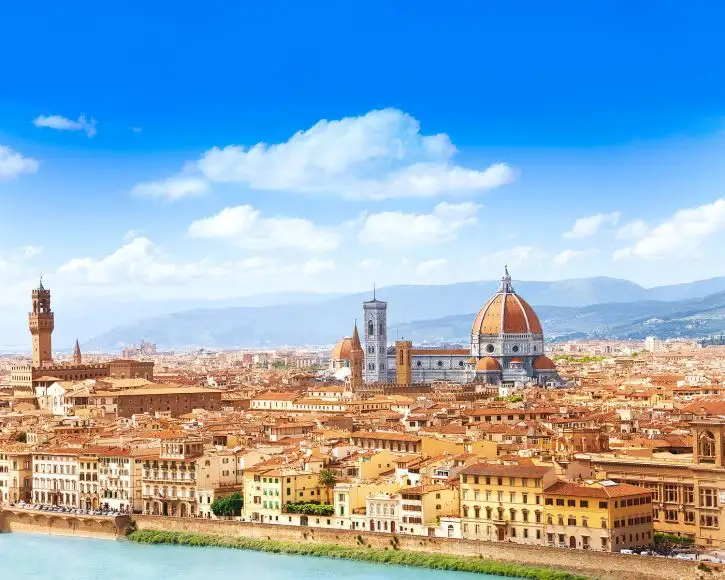
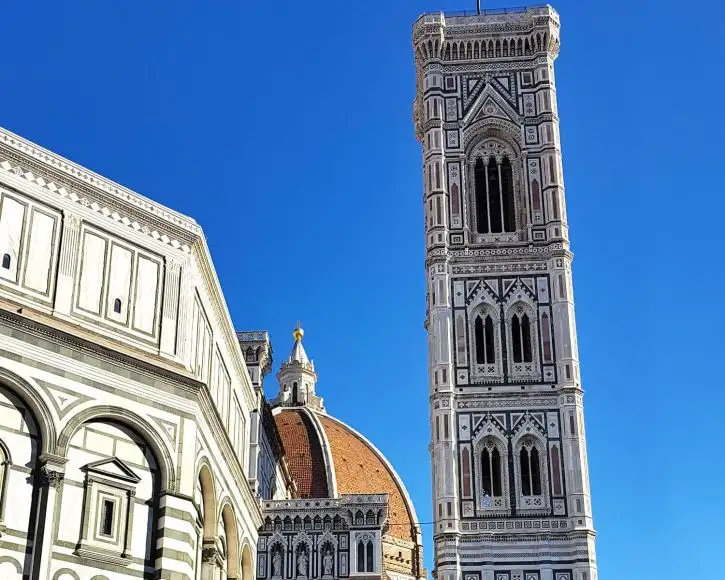
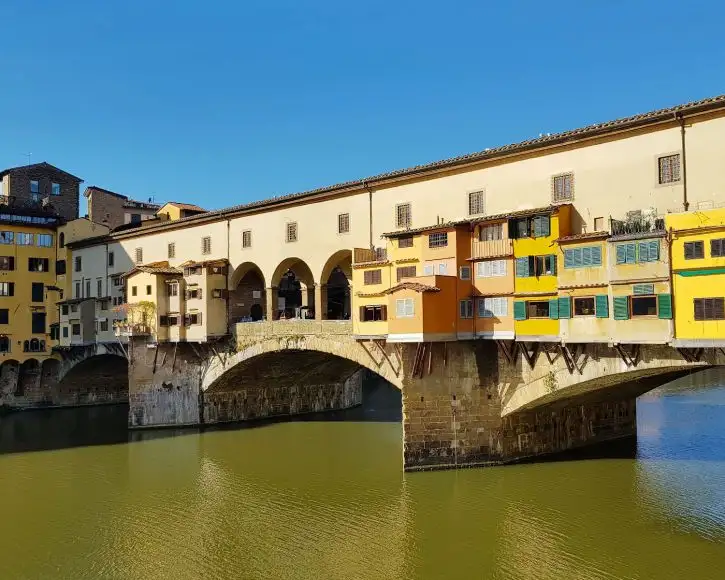
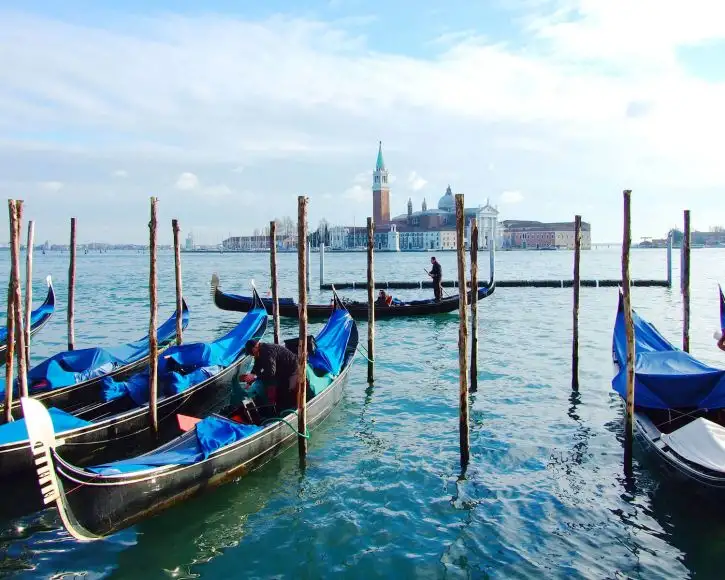
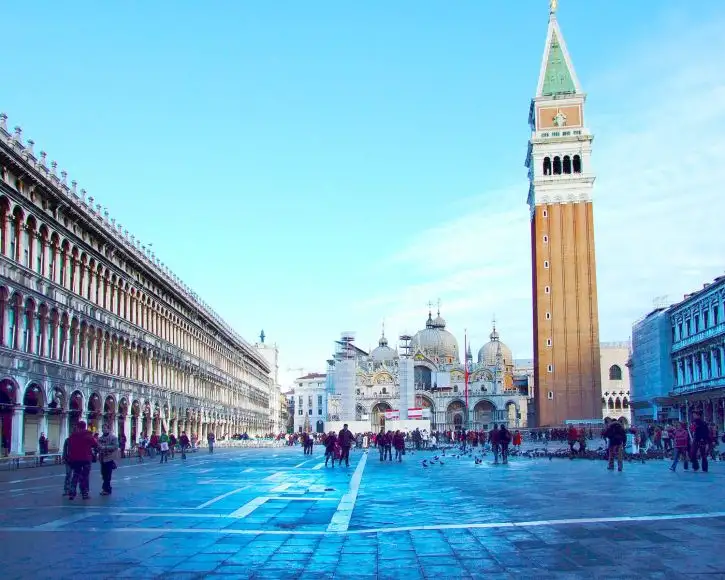
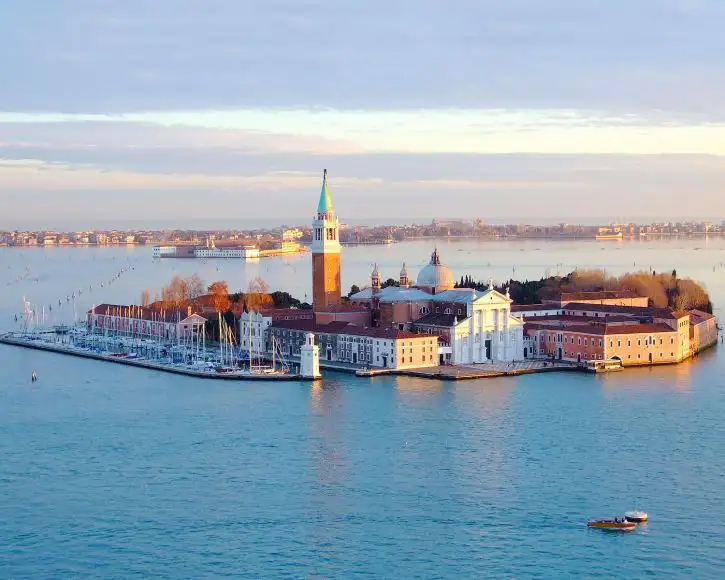
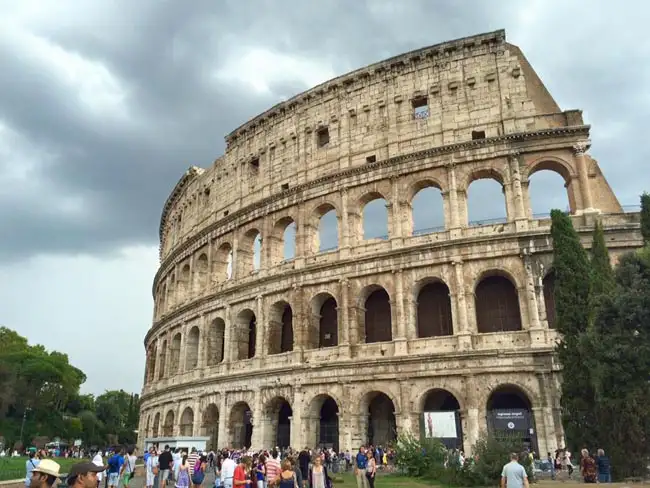
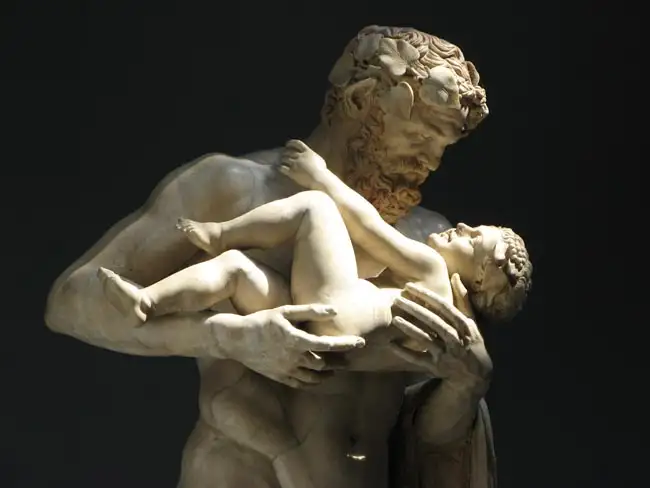
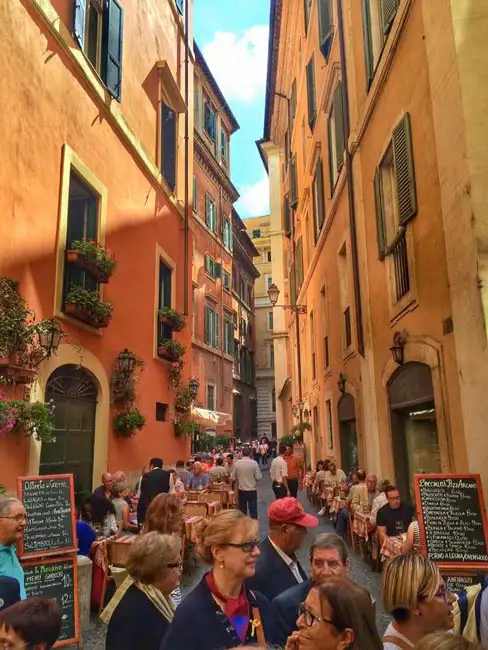
Excellent
Overall Rating
4.7
Extend Your Trip
This tour is part of a series that can be upgraded to make for a longer trip.
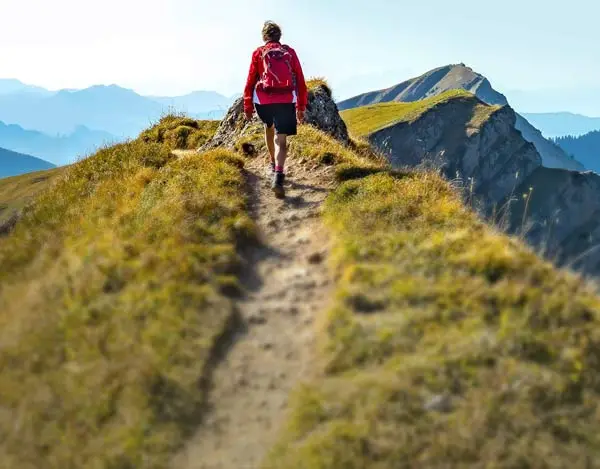
Fast and easy
Book This Tour
Book your unforgettable adventure today! For any questions or advice, don't hesitate to contact us.
Have questions?
1-800-665-3998
- Final payment: Due 90 days prior to departure.
- Deposit: A non-refundable $500 USD Deposit is required at booking.
- Optional Single Supplement: $2560 USD (number of singles limited).
(View options forsingle travellers) - Transfering Tour or Date: Transferring to another tour or tour date is only permissible outside of 120 days prior to departure and is subject to a $100 USD change fee.
(Read our cancellation policy)
Choose your departure date:
Prices below are per person, twin-sharing costs in US Dollars (USD). Pricing does not include airfare to/from the tour and any applicable taxes.
Prices below are per person, twin-sharing costs in US Dollars (USD). Pricing does not include airfare to/from the tour and any applicable taxes.
Frequently Asked Questions
- What is the maximum number of participants on a trip?Most of our tours carry a maximum of 18 participants; some tours (ie hiking tours) top out at 16. In the event that we do not achieve our minimum complement by our 90-day deadline, we may offer group members the option of paying a "small-group surcharge" as an alternative to cancellation. If all group members agree, we will confirm the trip at existing numbers; this surcharge is refundable in the event that we ultimately achieve our regular minimum. If the small group surcharge is not accepted, we will offer a refund of your deposit or a different trip of your choice.
- Can I extend my tour either at the beginning or end? What about stopovers?Yes, you can extend your tour either at the beginning or the end and we can book accommodation in our tour hotel. Stopovers are often permitted, depending on air routing. Stopovers usually carry a "stopover" fee levied by the airline.
- How do I make a reservation? How and when do I pay?The easiest way to make a reservation is via our website; during office hours, you are also more than welcome to contact us by telephone.
A non-refundable deposit is payable at the time of booking; if a reservation is made within 90 days, full payment is required. Some trips require a larger deposit. If international airline bookings require a non-refundable payment in order to secure space or the lowest available fare, we will require an increase in deposit equal to the cost of the ticket(s).
Early enrolment is always encouraged as group size is limited and some trips require greater preparation time.
Once we have received your deposit, we will confirm your space and send you a confirmation package containing your trip itinerary, any visa/travel permit related documents, invoice, clothing and equipment recommendations, general information on your destination(s), and forms for you to complete, sign and return to us. Your air e-tickets (if applicable), final hotel list, final trip itinerary, and instructions on how to join your tour, will be sent approximately 2-3 weeks prior to departure. - What about cancellations, refunds, and transfers?Please review our cancellation policy page for details.
- I am a single who prefers my own room. What is a single supplement?All of our tours have a single supplement for those who want to be guaranteed their own room at each location.
This supplement is a reflection of the fact that most hotels around the world do not discount the regular twin-share rate for a room by 50% for only one person occupying a room. Most hotels will give a break on the price, but usually in the range of 25-30% of the twin-share rate. This difference, multiplied by each night, amounts to the single supplement.
The conventional amount can also vary from country to country and some destinations are more expensive than others for single occupancy. In order to be "single friendly," the supplements we apply are not a profit centre for us and we do our best to keep them as reasonable as possible.
On most tours we limit the number of singles available, not to be punitive, but rather because many hotels allow for only a limited number of singles; some smaller hotels at remote locations also have a limited number of single rooms available.
Please note that most single rooms around the world are smaller than twin-share rooms and will likely have only one bed. - Do you have a shared accommodation program?Yes! If you are single traveller and are willing to share, we will do our best to pair you with a same-gender roommate. Please note that should we fail to pair you, we will absorb the single supplement fee and you will default to a single room at no extra charge.
